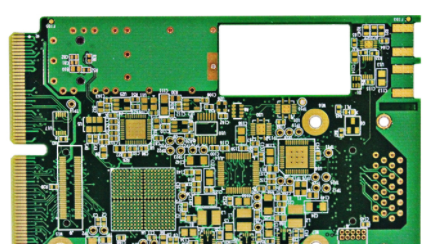The difference and characteristics of PCB and PCBA
Some people who are new to the electronics manufacturing industry may not be very clear about PCB and PCBA, and they may confuse the two. The editor of Shenzhen PCB Electronics Factory encountered this problem when he first came into contact with the electronics industry. In order for everyone to identify them quickly and reduce unnecessary troubles, the editor of Yuwei Electronics will introduce the differences and characteristics of PCB and PCBA.
A, PCB
PCB has many names, which can be called circuit boards, PCB boards, circuit boards, high frequency boards, thick copper boards, impedance boards, multilayer circuit boards, multilayer PCBs, ultra-thin circuit boards, ultra-thin circuit boards, printed (copper Etching technology) circuit boards, etc., are important electronic components used to support electronic components and realize the connection of electronic components.

B, PCBA
PCBA is the abbreviation of PrintedCirruitBoardAssembly in English, but in foreign countries, PCBA is generally translated into PCBAssembly. It is to form a finished product, referred to as PCBA, through the process of SMT patch, DIP plug-in and testing, etc. of the empty PCB board.
Three, the difference between PCBA and PCB
PCB is an empty board (abbreviated as bare board). There is nothing on the surface of the board; while PCBA is processed on an empty PCB, where resistors, capacitors, chips and other components are installed to form a board with certain functions. All electronics The core part of the product is a finished board composed of PCBA.
The unique characteristics of PCB are summarized as follows:
1. The design can be standardized to facilitate interchangeability.
2. High wiring density, small size and light weight, which is conducive to the miniaturization of electronic equipment.
3. It is conducive to mechanization and automated production, which improves labor productivity and reduces the cost of electronic equipment.
4. Because the graphics are repeatable and consistent, errors in wiring and assembly are reduced, and equipment maintenance, debugging and inspection time are saved.
The unique characteristics of PCBA are summarized as follows:
PCBA is the abbreviation of PrintedCircuitBoard+Assembly, which means that PCBA passes through the entire process of PCB blank board SMT loading and then DIP plug-in.
Note: SMT and DIP are both ways to integrate parts on the PCB. The main difference is that SMT does not need to drill holes on the PCB. In DIP, the PIN pins of the parts need to be inserted into the holes that have been drilled.
SMT (SurfaceMountedTechnology) surface mount technology mainly uses mounters to mount some tiny parts on the PCB. The production process is: PCB board positioning, printing solder paste, mounting machine mounting, reflow oven and Make inspection.
DIP means "plug-in", that is, inserting parts on the PCB board. This is the integration of parts in the form of plug-ins when some parts are larger in size and are not suitable for placement technology. The main production process is: sticking adhesive, plug-in, inspection, wave soldering, printing and finished inspection.